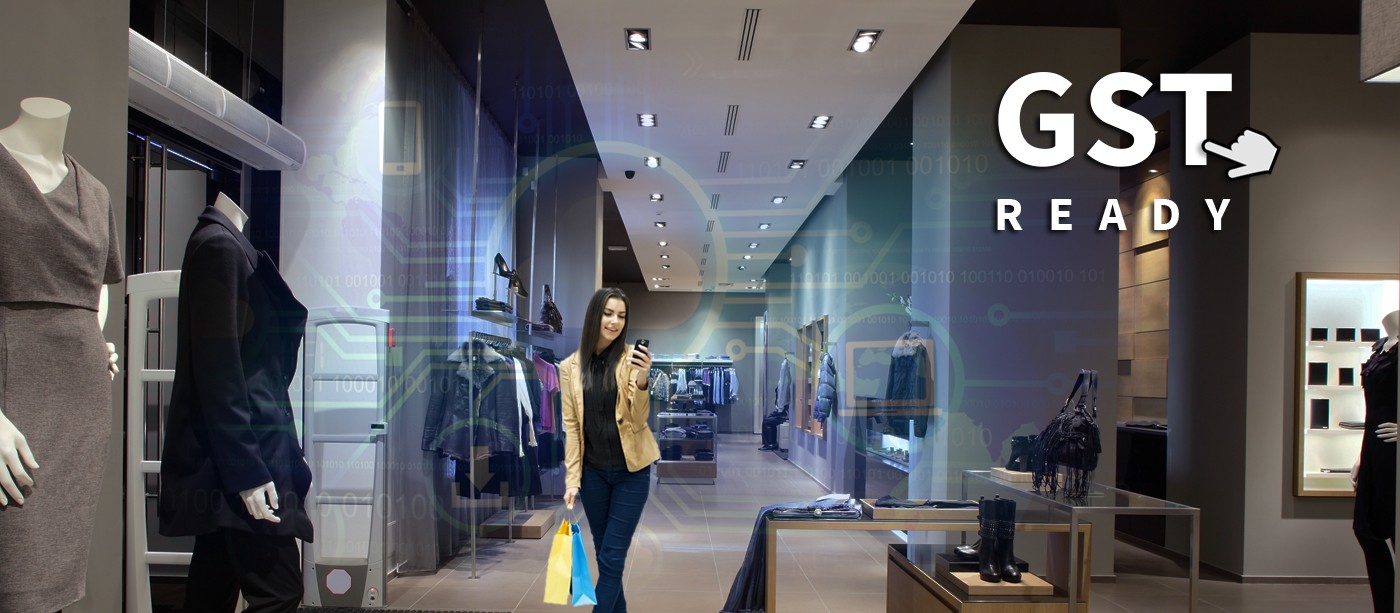Leading retailers have successfully rolled out ETP Omni-channel Retail POS GST software in more than 1000 stores across India. This will enable retailers to efficiently handle billing and other retail processes seamlessly while being compliant with GST tax structure and manage other GST related impacts with ease.
ETP’s Omni-channel Retail Solution with the Retail POS GST pack handles not only the billing processes with GST impact, but also various other retail processes, making them GST ready. Some of these processes are listed below:
As a large retailer, if you have any queries about GST and how ETP can help you transform your business, connect with us today!

GST is a remarkable change in the history of India’s indirect taxation. For retailers, it is a challenging period as it involves operations across multiple states of India and covers not only B2C, but also B2B (Franchisee) transactions. Considering the various types of transactions in retail such as billing, return anywhere policy, advance order, servicing online orders, transfers to stores or to warehouses, purchases and returns, it is imperative that retailers closely assess different business applications and ensure that the same are GST ready to tackle the complexities involved.
1. A unified tax regime – India has a number of indirect taxes – VAT, service tax, CST, service tax on warehousing, consulting and rent, octroi and entry tax to name a few. The government plans to create a unified tax regime that will boost the morale of retailers and will help the retailers to conduct business with greater confidence.
2. Tax structure- The government has proposed four tax slabs at 5%, 12%, 18% & 28 % for different types of items and services. Moreover, there will be 3 kinds of applicable Goods and Services Taxes:
Central GST (CGST), where the tax will be collected by the central government.
State GST (SGST), where the tax will be collected by the state government
Integrated GST (IGST), where tax will be collected by the central government for inter-state sales.
3. This tax structure will encourage retailers to consolidate their warehouses. As much as 20-30% consolidation of warehouses is expected. Moreover, it would also be easy to transport goods from one state to another as boundaries will become insignificant.
4. Input tax credit- This attribute can definitely be considered to be the most important and significant aspect of GST. Input tax credit is the savings you can get while paying the tax at the output, by offsetting it with the tax you paid at the input. It applies to all barring Agriculturists. In the current tax regime, input tax credit is applicable only on VAT, but in proposed GST regime there will be a set off in taxation starting from the producer’s point till the customer’s point. The outcome of this step would be a significant reduction of the tax burden on retailers and this very well may be passed on to consumers, thus providing room for price reduction as well.

GST is a consumption based or destination based tax i.e. the tax should be received by the state in which the goods or services are consumed or rather the destination of the final goods and not by the state in which such goods are manufactured. So the cascading effect of taxes will be done away with. This indeed is one of the major advantages of implementing GST. But it would require a complete renovation of the existing systems/paradigms pertaining to taxation. And, this is where one of the most formidable players in our economy, the IT comes into play. IT has brought about a revolution in the way we carry out our activities, and it is thus relevant for retailers to adopt/modify their IT strategies. Retailers have to deal with various aspects that would be affected by implementing GST such as billing, returns, merchandising, delivery, transportation, order management so on and so forth. The prerequisite for dealing with the changes pertaining to the aforementioned activities is to implement a comprehensive, extensive and user-friendly retail solution software. Easier said than done. Most of the retailers in India do not have their own retail software solution and they outsource it to 3rd party vendors. It becomes of immense importance for retailers to choose a solution software that helps them deal with –
And many more….
